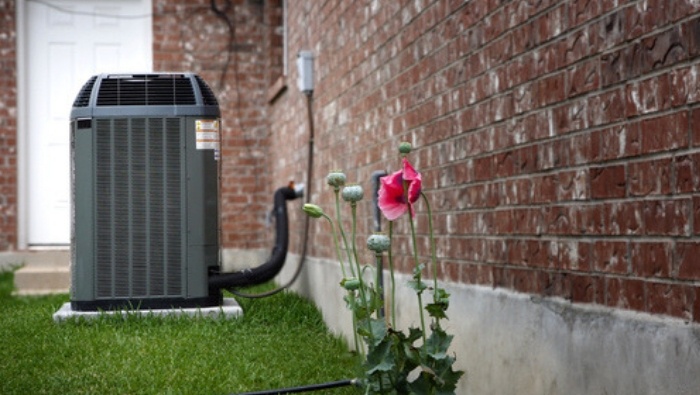Perform Your Own Annual Air Conditioner Inspection

No need to pay for an A/C annual inspection. Find out how you can easily perform a DIY air conditioner check-up and forgo the A/C pro.
Many contractors will tell you not to perform your own annual air conditioner inspection. They are eager to come out and do a “tune-up” for a nominal fee while trying to lure you into a yearly service contract. Sadly, millions of people fall for these because they are led to believe that an A/C system is like a car in that it requires periodic routine maintenance or service. They do not!
What the Pros Don’t Want You To Know About Your A/C System
Before getting into how easily you can perform your own annual air conditioner inspection, let’s discuss a few facts about an A/C most contractors don’t want you to know.
- They don’t have spark plugs to change or a dipstick to check the oil. In fact, there really are no serviceable parts in them. Properly installed, they either work or they don’t!
- They are a sealed system. If there are no leaks and they are correctly charged at one time or another, you should never need refrigerant again unless something blows out! Unfortunately, a government study revealed that approximately two-thirds of all A/C systems are not adequately charged to begin with. That’s because the technician didn’t utilize the superheat or subcooling method, but explaining that is best left to another article.
Sign Up for Savings
Subscribe to get money-saving content by email that can help you stretch your dollars further.
Twice each week, you'll receive articles and tips that can help you free up and keep more of your hard-earned money, even on the tightest of budgets.
We respect your privacy. Unsubscribe at any time.
What the Pros Do When They Perform an Annual Air Conditioner Inspection
OK, so what do they do in this “tune-up” or a/c annual inspection that you’re going to pay adequately for?
1. Remove debris blocking airflow to the outdoor condenser
Well, if they do anything productive at all, they will look at the big radiator-looking thing to see if you’ve blown grass clippings into it while mowing or weed-eating. They’ll clear those out if so, but you probably could have done that yourself with a garden hose.
2. Inspect the start capacitor
Next, they’ll measure a part in there called a start capacitor. More than likely, they will tell you it’s getting weak and needs to be replaced. If you go for it, you may pay up to $200+ for a part that costs them $50-$70. The truth is that they are a very low tolerance part to begin with and can come out of the factory measuring 10% above or below what is stated on the part. If it does happen to fail, either the compressor won’t start or the fan on top won’t run. You can have it replaced at that time.
3. Diagnose the capacitor
You can pretty much diagnose a capacitor yourself.
If the fan stops, stick a twig or small wire through the grooves and see if the fan rotates freely. A rotating fan means the problem is likely a failed capacitor. If the fan is running but you have no cooling, reach down and grab the larger copper line. If it does not feel very cool to cold, the compressor is not running. Again, the problem is probably the capacitor. Having said this, though, the compressor or fan motor can go out, but it is not nearly as common as a failed capacitor.
4. Determine if the A/C system is charged correctly
Now that we’ve gotten through all that, the pros will almost always throw a set of gauges on the outside unit. This step is necessary to check the charge, but if the technician does not take temperature and humidity measurements inside your home or office, they are not doing it correctly. You must know the heat load and correlate that with the gauge pressures to determine if the system is charged correctly!
5. Change the filter and check your A/C efficiency
Now we’re down to the easy part. First, check your filter and change it if it’s dirty. Then turn the system on and set the thermostat low so that it will run a while.
After about ten minutes, take a thermometer, even one like you stick in a turkey, and stick it in the return air grill for a few minutes. Log that temperature, and then stick the thermometer in one of your floor or ceiling outlet vents. When the thermometer stabilizes, subtract that temperature from what you read at the return air grill. If you get a 15 to 20-degree difference, your system is running about as efficiently as it can!
Performing your own annual air conditioner inspection is a simple DIY job that most people can easily do. Try it yourself, and save your hard-earned cash for the maintenance and repairs you can’t do.
Reviewed March 2023
Wouldn't you like to be a Stretcher too?
Subscribe to get our money-saving content twice per week by email and start living better for less.
We respect your privacy. Unsubscribe at any time.
Popular Articles
On After50Finances.com
- 9 Things You Need to Do Before You Retire
- You Didn’t Save Enough for Retirement and You’re 55+
- When Empty Nesters Reorganize and Declutter Their Home
- Reinventing Your Career in Your 50s or 60s
- What Mature Homeowners Should Know about Reverse Mortgages
- 2 Reasons to Collect Social Security Benefits As Soon As Possible

